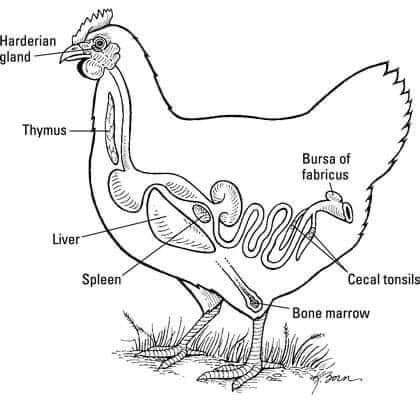Poultry House Ventilation: Tips on The Ventilations of Poultry Houses:
Proper air flow is very vital for the optimal performance of our birds but many farmers often see it as something neglected! Some problems we have in our farms could be traced to Ventilation and they often arise when not looked into from the onset (brooding).
Air is needed for the breakdown of ingested feed, elimination of ammonia gas and carbon monoxide from the brooder, cooling the body of the birds, removing dampness, helping in proper litter management and also reducing the risk of the quick spread of diseases.
When a brooder house is poorly ventilated (fully sealed brooder house with tarps or polyethene papers, it gives room for little or no air to come in. oxygen is needed for food metabolism and when absent, food metabolism is slowed which can result in stunted growth.
The already exhaled air is still reused by the birds which are detrimental to them.
The moisture from the droppings and evaporation from waterers are also trapped thereby making the litter wet and the environment humid. Wet litter serves as a breeding ground for diseases like coccidiosis, salmonellosis etc.
Ammonia gas from the litter is trapped too and can lead to itching, mucus in the eyes, ammonia burn, a disease called ammoniac kerato-conjunctivitis, favouring e.coli growth, etc. All these make us spend money on drugs, have more mortalities, decrease egg production and eventually increase the cost of production. poultry Poor Ventilation can lead to sudden death, pasted vents, ascites, and even poor temperature regulation.
Farmers should give more attention to Ventilation during brooding just like the way we give attention to warmth provision. Older birds need proper Ventilation in all seasons.
Remember a healthy bird is Swiftie money.
WHAT TO DO?
1. Do not seal the brooder completely! Leave some breathing space. Early cough and flu are results of bad gases not leaving the brooder and failure to provide fresh air. To avoid brooder pneumonia, the gases from charcoal and litter have to be exchanged with new fresh air.2. Brooder curtains should be opened during the day (only when the heat from the sun is good ie. Around 12am). The opening should be done for 30 minutes every after 3 hours.
3. As the chicks gain feathers, they start generating warmth. That's about 4 weeks. So we partially remove curtains since even during this period they bat a lot in the dust .....so we have to open for the dust to get out.
4. We must clear vegetation away from the poultry houses. 5 meters away from the house should be free from trees and crops that can block the entrance of fresh air.
5. Cobwebs and dust from the poultry house get stuck on the wire mesh. You need to sweep off or brush off the dust twice a month. . Ammonia smell is not good. Replace litter if it smells badly or frequently remove litter from cages to avoid ammonia smell.
6. A distance of 10 to 12 meters should be considered in between houses for proper air flow.
7. It's better to have a double-sided chimney on top of the roof so that air is distributed on both sides of the house, than a single-sided chimney which distributes air to only one side of the house. A Closed roof is easily burnt by ammonia gas and rust.
8. Do not build poultry houses in square form, as it's difficult for air to be exchanged. Build houses in a rectangular form, with a short width of not more than 10 meters wide but for length, it's your land to limit you.
9. Cage houses should be completely open. Just build one or 2 bricks after the foundation to stop rain water from flashing into the house. For Deep litter houses, build 3 courses of blocks from the foundation then the rest should be wire mesh
10. Residential houses are not fit for poultry-keeping.
Keywords:
poultry houses
chicken coops for sale
home ventilation system
whole house ventilation fan
under house ventilation
roof vents for houses
whole house air exchange system
poultry
chickens
poultry farm
chicken coops for sale
chickens for sale
chicken feed
broiler chicken
chicken farm
free-range chicken






0 Comments